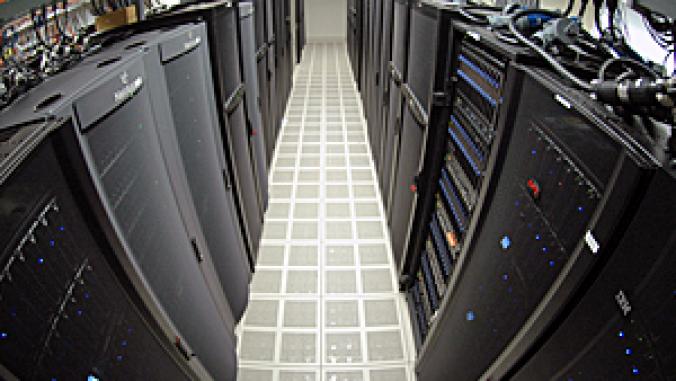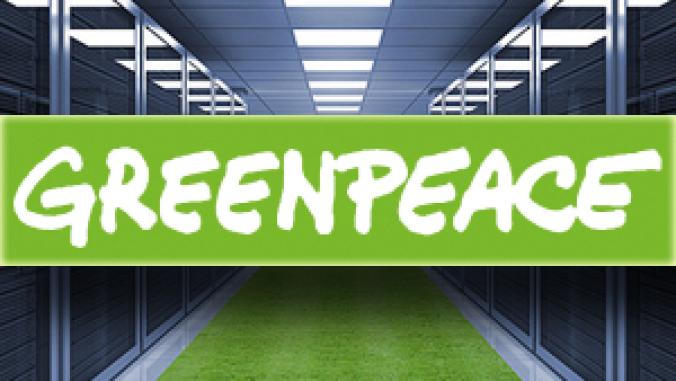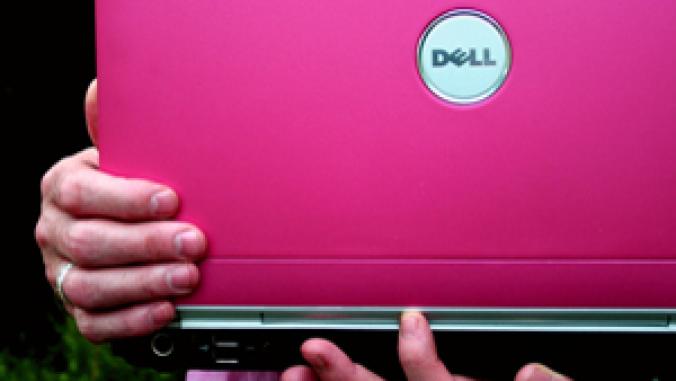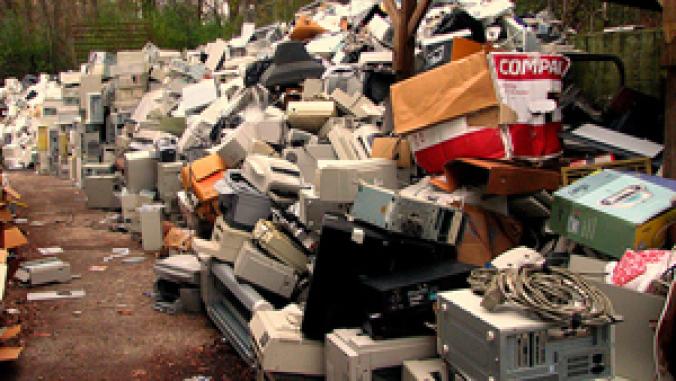Power Management Project May Save Indiana University $500K a Year
A pilot project on the campus found a projected savings of $.5 million annually by shutting down computers that are not in use.

The Bloomington campus found it can save money -- and reduce CO2 emissions -- just by simply turning off computers that are not in use.
Kristin Hanks, a Ph.D candidate in the School of Informatics helped to initiate a pilot project in the School of Education that used software to put the department's computers into deep sleep mode after two hours and 15 minutes of inactivity. Hanks, who said she is generally interested in sustainability and IT, said the credit should go to the School of Education.
"The School of Ed, they are the ones who were going to do this anyway," Hanks said in a telephone interview. "I just made sure that we could use (their data) to implement this campus-wide."
But more than just remotely powering-off this department's 700 or so computers, Hanks and the University Information Technology Services (UTIS) team also developed a GoGreen Gadget, which allows a user to see how much CO2 their individual computer is saving, as well as track long-term usage.
"We do know how much that (the program) is saving the university," Hanks said, noting that each individual user saves about $12 per year. But because each student won't receive the money saved, she said "we chose to focus on the environmental aspects...(because) they do get the benefit of reduced CO2 emissions. We really want to focus on real intrinsic values rather than just financial values."
Shifting these values is where Bill Brown, Director of Campus Sustainability, comes in. Brown directs sustainability internships, teaches sustainability leadership course and coordinates the academic work done by students with the operations done on campus. This coordination role is vital to the expansion of the pilot project to the entire campus.
In order for the transistion to run smoothly, Brown noted a few things the UTIS team discovered during the greener computing project. For example, the system had to allow users to turn on their computers remotely, in order to access files from home. The remote access also allowed the IT team to add security patches to computer software during the day, which previously had been done at night.
And even though Hanks said a vendor orignially approached her about an energy conservation software package, after speaking with the IT team, they decided to develop the software themselves -- saving even more money.
During the four-week pilot program, the team found energy usage decreased 48.3 percent for 11 desktop computers and a wing on the fourth floor of the Wright Education Building decreased by 30.9 percent. If implemented across the IU campus, the university could save $.5 million in energy costs and prevent the release of 15,000 tons of CO2 annually. "Theoretically, the program could more than pay for itself," Brown said.
But more than simply turning off an appliance, Brown and Hanks are both part of a larger movement on campus to improve sustainability. Last summer, Hanks' sustainability internship centered around greener computing, and she used this research to guide the pilot program with the School of Education. She now mentors other graduate students in the summer sustainability internship program.
In addition to overseeing the summer internship program, Brown acts as an intermediary between student intiatives and campus operations, as well coordinating ideas with other campuses. Implementing the greener computing program will require collaboration among departments and schools at IU, which can be difficult, Brown said, because each school does things differently.
"The bigger challenge is cultural and policy changes (among departments). They have worked out the technology," he said.
He is however, showing students how they can make small changes and see immediate results from conservation and sustainability efforts. In the spring, during the IU Energy Challenge, more than a quarter of the 10,0000 students led peer to peer education and voluntarily conserved resources.
In a matter of four weeks, Brown reported that the students saved 709,211 kilowatt hours of electricity -- a 59 percent increase from last year's challenge -- and reduced water consumption by more than 1 million gallons of water, for a total of $48,000 savings.
"Hopefully it is an unforgettable lesson, that they will never walk away from a light switch again without thinking to turn it off," Brown said. And like Brown, Hanks is also communicating among levels of leadership to expand sustainability across the campus, with the help of students, faculty and staff.
Based on her 2008 summer internship, she is using what she learned to expand greener computing initiative with a print duplexing study, creating awareness of Adobe software that allows the user to mark up a pdf document, and en electronic waste collection drive. During the drive they collected 830,000 pounds of e-waste, including 500 computers from a school district. Sharing these ideas with other deparments will help their central IT group to facilitate the process of sustainable computing, she said.
Rather than a grassroots movement or a top-down directive from the university president, Hanks describes her sustainability work as a "conversation" between those at the policy level, those in the university operations and individual personal habits.
"Our approach is kind of to fit our community needs and the direction we want to move," she said. "Like the people at the School of Ed who are also very forward thinking; how can we replicate our ideas," and share them with students, faculty and staff.
She takes a cue from IU's Associate Vice President, when it comes to campus sustainability: he believes that in the same way IT security is everyone's job, he also believes sustainability should be everyone's responsibility.
"It is not just your responsibility, but the university (should be) providing ways to be more sustainable," she said. While there are many other improvements that can be made, such as in data centers, "these kinds of small energy-consumer projects have a cumulative effect and most people have ignored them for too long."
And the collaboration among academic work and campus operations is a powerful learning lab, Brown said. It is important to know, "how powerful the influence the students have on the adminisration, there are barriers they students can braek through," that others cannot, Brown said.
"They are pretty fearless; they can walk into anyone's office and people have a lot of respect for them. They do great things."
Kristin Hanks, a Ph.D candidate in the School of Informatics helped to initiate a pilot project in the School of Education that used software to put the department's computers into deep sleep mode after two hours and 15 minutes of inactivity. Hanks, who said she is generally interested in sustainability and IT, said the credit should go to the School of Education.
"The School of Ed, they are the ones who were going to do this anyway," Hanks said in a telephone interview. "I just made sure that we could use (their data) to implement this campus-wide."
But more than just remotely powering-off this department's 700 or so computers, Hanks and the University Information Technology Services (UTIS) team also developed a GoGreen Gadget, which allows a user to see how much CO2 their individual computer is saving, as well as track long-term usage.
"We do know how much that (the program) is saving the university," Hanks said, noting that each individual user saves about $12 per year. But because each student won't receive the money saved, she said "we chose to focus on the environmental aspects...(because) they do get the benefit of reduced CO2 emissions. We really want to focus on real intrinsic values rather than just financial values."
Shifting these values is where Bill Brown, Director of Campus Sustainability, comes in. Brown directs sustainability internships, teaches sustainability leadership course and coordinates the academic work done by students with the operations done on campus. This coordination role is vital to the expansion of the pilot project to the entire campus.
In order for the transistion to run smoothly, Brown noted a few things the UTIS team discovered during the greener computing project. For example, the system had to allow users to turn on their computers remotely, in order to access files from home. The remote access also allowed the IT team to add security patches to computer software during the day, which previously had been done at night.
And even though Hanks said a vendor orignially approached her about an energy conservation software package, after speaking with the IT team, they decided to develop the software themselves -- saving even more money.
During the four-week pilot program, the team found energy usage decreased 48.3 percent for 11 desktop computers and a wing on the fourth floor of the Wright Education Building decreased by 30.9 percent. If implemented across the IU campus, the university could save $.5 million in energy costs and prevent the release of 15,000 tons of CO2 annually. "Theoretically, the program could more than pay for itself," Brown said.
But more than simply turning off an appliance, Brown and Hanks are both part of a larger movement on campus to improve sustainability. Last summer, Hanks' sustainability internship centered around greener computing, and she used this research to guide the pilot program with the School of Education. She now mentors other graduate students in the summer sustainability internship program.
In addition to overseeing the summer internship program, Brown acts as an intermediary between student intiatives and campus operations, as well coordinating ideas with other campuses. Implementing the greener computing program will require collaboration among departments and schools at IU, which can be difficult, Brown said, because each school does things differently.
"The bigger challenge is cultural and policy changes (among departments). They have worked out the technology," he said.
He is however, showing students how they can make small changes and see immediate results from conservation and sustainability efforts. In the spring, during the IU Energy Challenge, more than a quarter of the 10,0000 students led peer to peer education and voluntarily conserved resources.
In a matter of four weeks, Brown reported that the students saved 709,211 kilowatt hours of electricity -- a 59 percent increase from last year's challenge -- and reduced water consumption by more than 1 million gallons of water, for a total of $48,000 savings.
"Hopefully it is an unforgettable lesson, that they will never walk away from a light switch again without thinking to turn it off," Brown said. And like Brown, Hanks is also communicating among levels of leadership to expand sustainability across the campus, with the help of students, faculty and staff.
Based on her 2008 summer internship, she is using what she learned to expand greener computing initiative with a print duplexing study, creating awareness of Adobe software that allows the user to mark up a pdf document, and en electronic waste collection drive. During the drive they collected 830,000 pounds of e-waste, including 500 computers from a school district. Sharing these ideas with other deparments will help their central IT group to facilitate the process of sustainable computing, she said.
Rather than a grassroots movement or a top-down directive from the university president, Hanks describes her sustainability work as a "conversation" between those at the policy level, those in the university operations and individual personal habits.
"Our approach is kind of to fit our community needs and the direction we want to move," she said. "Like the people at the School of Ed who are also very forward thinking; how can we replicate our ideas," and share them with students, faculty and staff.
She takes a cue from IU's Associate Vice President, when it comes to campus sustainability: he believes that in the same way IT security is everyone's job, he also believes sustainability should be everyone's responsibility.
"It is not just your responsibility, but the university (should be) providing ways to be more sustainable," she said. While there are many other improvements that can be made, such as in data centers, "these kinds of small energy-consumer projects have a cumulative effect and most people have ignored them for too long."
And the collaboration among academic work and campus operations is a powerful learning lab, Brown said. It is important to know, "how powerful the influence the students have on the adminisration, there are barriers they students can braek through," that others cannot, Brown said.
"They are pretty fearless; they can walk into anyone's office and people have a lot of respect for them. They do great things."




